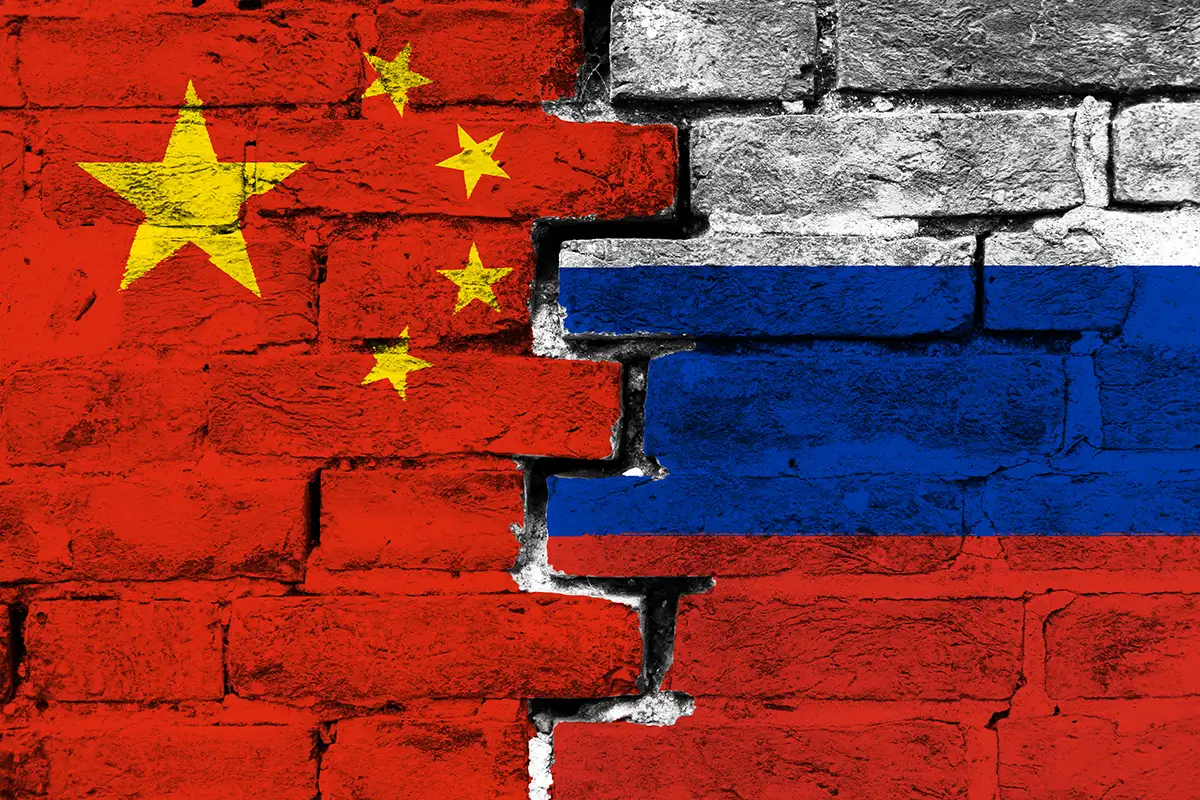Earlier this month, at a Center for Strategic and International Studies event, the White House's Indo-Pacific coordinator, Kurt Campbell, told the online audience that the Pacific may be the most likely venue for a "strategic surprise" — from China. During the event, there was a different kind of surprise: breaking news that North Korea had just test-fired a missile, which was only one of a number of different missiles North Korea has launched this month.
The following is a “future history” account of a hypothetical strategic surprise in the Pacific, but not the type Campbell had in mind. Though it is a work of fiction, it is grounded in analysis of historical patterns and current trends outlined in the CNA Occasional Paper North Korea's Arena of Asymmetric Advantage: Why We Should Prepare for a Crisis in the Yellow Sea. It is a stark warning of the potential consequences if the United States and South Korea are unprepared for the military and political implications of North Korea's continued weapons development alongside the rising assertiveness of the People's Republic of China (PRC).
[Excerpts from “Chapter 15: A Mortal Wound,” The History of the United States-South Korea Alliance, US Naval Institute Press, 2037.]
The alliance was caught unprepared for the Yellow Sea Crisis, not because intelligence analysts did not see the warning signs, but because Seoul and Washington had not grasped how much had changed since the last confrontation with North Korea. Perhaps they were desensitized by the familiar narrative—threats and claims of grievances from North Korea amid rumors about contentious palace politics in Pyongyang. Perhaps they were so fixated on the potential for a U.S.-China war in the Taiwan Strait that a confrontation in the Yellow Sea seemed trivial by comparison…
…
The crisis first made headlines when Kim Yo-jong, the sister of North Korean leader Kim Jong-un, warned of dire consequences for South Korean “violations” of an obscure agreement governing disputed waters in the Yellow Sea near South Korea's Paengyong Island. These waters had been a perennial flashpoint, the site of numerous miliary clashes between North and South Korea, as well as a politically sensitive area where North Korean, South Korean and Chinese fishing vessels all operated in close proximity.
Seoul and Washington, moving in the practiced, coordinated manner of a mature and “ironclad” alliance, quickly agreed on increases in alert levels and other carefully calibrated measures to prepare for North Korea's next moves. The allies agreed about the need to show restraint—particularly after Beijing warned “all sides” not to escalate. South Korea's president, confident in his military advantage and U.S. backing, stood firm while offering talks to resolve the dispute.
Pyongyang rejected Seoul's offer as insincere, and soon escalated to violence. Some observers at the time blamed Kim's temper, but thanks to newly declassified documents, we now know the premediated attack was a calculated risk. Pyongyang gambled that it had chosen the right time and place to surprise its more powerful adversaries with new weapons. Pyongyang also bet big that a conflict in the Yellow Sea could be contained, particularly because China's interests would lead it to intercede if the situation started to spiral out of control.
The clashes at sea between North and South Korean patrol boats began the day after Pyongyang rejected talks, but we now know that North Korea never expected to win them. They were merely prelude and a pretext for what came next…
…
Less than an hour before dawn, dozens of North Korean missiles of various types began raining down on the South Korean defenses of Paengyong Island, most of them striking bunkers, radars, barracks, and weapons positions with reasonable accuracy. Each of these missiles were new types that had been repeatedly tested by North Korea in the months and years after Kim Jong-un's summits with President Trump. Dismissed as mere “short range” missiles, the tests did not attract the international attention and additional sanctions that intercontinental ballistic missiles or nuclear weapons had—so North Korea's refinement of these weapons had gone largely unchecked…
…
To their credit, the island's defenders began returning fire within minutes, and the South Korean military rapidly moved to come to the beleaguered island's aid. However, despite South Korea's more advanced military equipment, along with its superior command, control and intelligence capabilities, geography stacked the odds in North Korea's favor.
North Korea's missiles were being fired from mobile launchers based on its massive, mountainous and well-defended Hwanghae Peninsula, located adjacent to the isolated South Korean island. The risks posed by North Korean antiship missiles, coastal artillery, submarines, and sea mines in these constricted waters made it difficult and dangerous for the Republic of Korea (ROK) Navy to even approach the Hwanghae Peninsula, while North Korea's numerous land-based surface-to-air missiles also kept the ROK Air Force operating at a distance. To neutralize these air and coastal defenses would require time that the island's defenders did not have and a level of massive escalation that Seoul was hesitant to authorize. South Korea did its best to hit back against the attackers as quickly as it could, unleashing its own land- and sea-based missiles from safely out of range of these defenses, using targeting data provided by advanced space-, air-, sea- and land-based sensors.
A U.S. liaison officer present for the planning of these counterattacks described the South Koreans as “playing whack-a-mole,” while the North Koreans were “shooting fish in a barrel.” South Korean forces were trying to find, identify and quickly strike North Korean targets—many of them mobile—in more than 8,000 square kilometers of mountains riddled with untold numbers of underground tunnels and bunkers. In comparison, the defenders of Paengyong were confined to a limited number of battle positions on a 45-square-kilometer island. Within hours, the chairman of the ROK joint chiefs of staff told his president and his U.S. counterpart that this was a losing proposition, and so a much stronger response, including direct U.S. military involvement, was called for. The “ironclad alliance” had already swung into motion…
…
While the allies were calibrating their next military actions to strike a decisive counterblow that would not trigger nuclear retaliation from North Korea, Beijing moved to intervene. PRC officials once again asserted China's “vital security interests” in the Yellow Sea, and its unwillingness to tolerate “chaos or war” on its doorstep. This time, however, it was more than rhetoric—it was backed by overwhelming military force. By the next day, hundreds of Chinese combat aircraft and dozens of warships were operating less than 20 miles west of Paengyong Island, backed by an umbrella of advanced air defense systems and sensors operating on the nearby Shandong Peninsula, a little more than 100 miles away. Beijing demanded an immediate cease-fire, with a “no-fly, no-sail” zone to separate the combatants.
This was a strategic shock to Seoul and Washington. Beijing held the initiative for the rest of the crisis…
…
With the announcement of the joint statement resulting from the negotiations that Beijing had forced on North and South Korea, the brief conflict came to an end, almost as abruptly as it began. The crisis had mercifully ended before the situation escalated to open warfare between the U.S. and China or to a North Korean nuclear strike. However, it had also ended before the military power of South Korea and the United States could be decisively brought to bear, before Washington and Seoul were able to demonstrate solidarity to counter coercion from Beijing and before North Korea could be held accountable for its aggression.
Early speculation by some American pundits that the attacks would lead to the end of the Kim regime were definitively proven wrong. Once again, this would not be “the last straw” for Beijing or Pyongyang's elites. Xi's initial ire at Kim's recklessness dissipated when it became clear that this unwanted crisis had elevated China's position vis-à-vis the U.S. Meanwhile, this signal victory vindicated Kim's choice to prioritize weapons and security over trade and prosperity—which cleared the way for domestic and international acquiescence to Kim family rule over a nuclear-armed North Korea for generations to come.
Beyond the hundreds of lives lost, it is clear to us today that the outcome of the crisis—highlighting the alliance's inability to counter North Korea's advancing missile capabilities and China's rising power—proved to be a mortal wound for the alliance itself. The depth of the loss of South Korean confidence in the U.S. was not obvious at the time, but in retrospect, the seemingly inconclusive Yellow Sea Crisis and the minor “battle of Paengyong Island” was a watershed moment in the decline of the ROK-U.S. military alliance and Beijing's rise to regional dominance.
It would take years, but the alliance's defeat in the Yellow Sea Crisis set in motion the chain of events that led later to the withdrawal of U.S. Forces Korea, then still later to the infamous Seoul Statement proclaiming the division of China and Korea as both “internal matters” to be resolved without foreign military interference. These events, in turn, set the political conditions leading to Beijing's decision to resolve the “Taiwan question” through force and the later collapse of the U.S. alliance system. If only Seoul and Washington had been better prepared and more resolute, the Yellow Sea Crisis could have instead cemented the strength of U.S. alliances and extended deterrence in the Western Pacific for decades to come…
For detailed analysis on the risk of a Yellow Sea Crisis like the scenario described above, and how to prepare for one, see the CNA occasional paper “North Korea's Arena of Asymmetric Advantage: Why We Should Prepare for a Crisis in the Yellow Sea.”
The views expressed are those of the author and do not necessarily reflect those of CNA or any of its sponsors.



